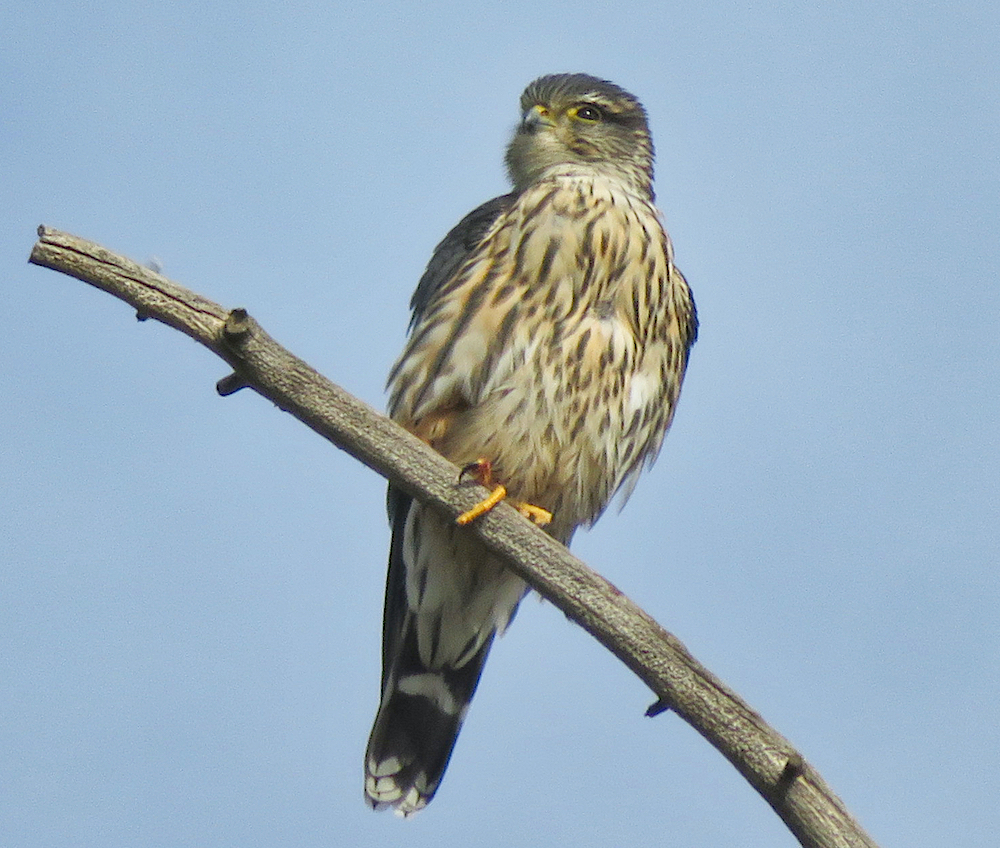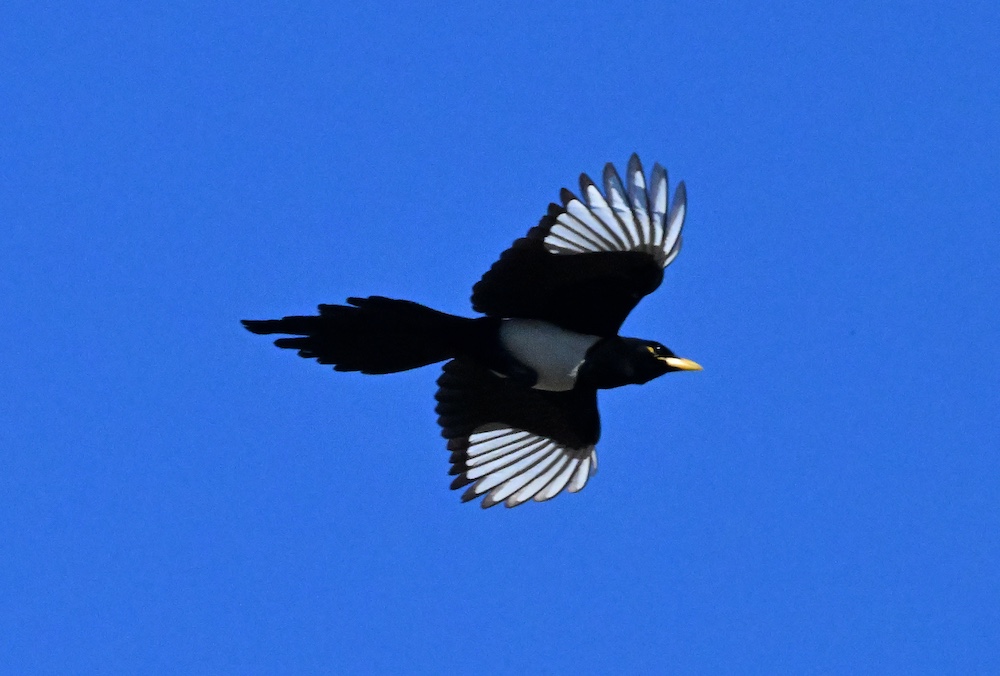
The wide-open vistas, grassy fields, large ponds and oak woodlands of Lema Ranch offer quite a variety of bird species. Winter waterfowl, woodpeckers and sparrows are a particular treat this time of year and if we’re lucky, we might spot a Canvasback or a Merlin! Meet at 8:00 am at Gate 10 located at the end of Lema Road, just past the maintenance facility. Park on the right-hand side of the road by the maintenance facility. We will walk the paved trails to view all five ponds. There is a bathroom located near Gate 10. Rain cancels the outing. Contact Larry Jordan at webmaster@shastabirdingsociety.org for more information.

This is a no fee area and a very active hotspot this time of the year, especially with all the recent weather events we have had in early 2025 so far. We are planning to meet at the Bass Pond Parking Lot at, 22459 Bend Ferry Rd, Red Bluff, CA 96080, at the main entrances to the Wetlands. Link: Paynes_Creek_Wetland-Bass_Pond
This half-day event should yield many varieties of waterbirds, raptors, woodpeckers, and many songbirds in this unique and open wetlands area. From the parking lot we will start with a walk on a two-mile loop through several ponds to the south side of the road. If time permits, we will take a short drive to Payne’s Creek Crossing to round out our journey. Please contact Dan Bye, by text/cell 530 228 9373 or email danbye56@gmail.com for more information.

Join Shasta Birding Society for a bilingual bird walk at the benches by the Sundial bridge at 9:30 am to walk the Turtle Bay Sanctuary Trail. Spanish and English speaking guides will help you identify birds in both English and Spanish. The trail is wheelchair accessible and benches are found throughout. The walk will last about 2 hours. Bilingual field guides and binoculars are provided.
Únase a Shasta Birding Society para una caminata bilingüe de aves en los bancos junto al puente Sundial a las 9:30 am para recorrer el sendero Turtle Bay Sanctuary. Los guías de habla española e inglesa le ayudarán a identificar aves tanto en inglés como en español. El sendero es accesible para sillas de ruedas y hay bancos por todas partes. La caminata durará unas 2 horas. Se proporcionan guías de campo y binoculares bilingües. Llame (909) 712-0208 si tiene preguntas.

Eleanor is a graduate student at Cal Poly Humboldt in Dr. Matt Johnson’s Habitat Ecology lab. She is investigating how the addition of songbird nest boxes affects bird communities and whether this has any top-down effect on insects in Napa Valley wine-grape vineyards. She is examining avian point counts and insect sampling conducted over the 2023 and 2024 breeding seasons on 20 vineyards, 10 with existing nest boxes and 10 with nest boxes added between field seasons. Her project focuses on vineyards that lie along gradients of local habitat and landscape complexity and will also address how local habitat and landscape composition influence bird communities. Eleanor is passionate about researching how anthropogenic effects influence avian population and community dynamics and how management can help mitigate these effects.
Agricultural expansion threatens biodiversity, but promoting native species like insectivorous birds in agricultural landscapes could benefit both biodiversity and farm productivity alike. Recently, some California wine-grape growers have used nest boxes to promote biodiversity and attract insectivorous birds, such as Western Bluebirds and Tree Swallows, in an effort to help control insects. This presentation will focus on the results of a before-after-control-impact experiment involving the addition of nest boxes to wine-grape vineyards that previously had none in Napa Valley, California. This research has the potential to offer deeper insights for management decisions concerning pest control by investigating the potential benefits of attracting more insect-eating birds to agricultural landscapes. This is part of a large collaborative research effort between Cal Poly Humboldt, UC Davis, UC Riverside, and UCCE and is funded by the Agricultural Research Institute.
Shasta Birding Society is inviting you to a scheduled Zoom meeting.
Topic: What Do Songbirds Have To Do With Wine?
Time: Feb 12, 2025 07:00 PM Pacific Time (US and Canada)
Join Zoom Meeting
https://us06web.zoom.us/j/82926444555
Meeting ID: 829 2644 4555
—
One tap mobile
+16699006833,,82926444555# US (San Jose)
+16694449171,,82926444555# US
—
Dial by your location
• +1 669 900 6833 US (San Jose)
• +1 669 444 9171 US
• +1 253 215 8782 US (Tacoma)
• +1 346 248 7799 US (Houston)
• +1 719 359 4580 US
• +1 253 205 0468 US
• +1 309 205 3325 US
• +1 312 626 6799 US (Chicago)
• +1 360 209 5623 US
• +1 386 347 5053 US
• +1 507 473 4847 US
• +1 564 217 2000 US
• +1 646 931 3860 US
• +1 689 278 1000 US
• +1 929 205 6099 US (New York)
• +1 301 715 8592 US (Washington DC)
• +1 305 224 1968 US
Meeting ID: 829 2644 4555
Find your local number: https://us06web.zoom.us/u/kerMfqbS9l

Join Shasta Birding Society for a bird walk around Nur Pon Open Space. Nur Pon, or “Salmon Run” in the Wintu language, was once known as Henderson Open Space before the City of Redding and numerous other agencies began a restoration project that established a side channel along the Sacramento River for salmon spawning. The parkland has been cleared of debris, much of the non-native vegetation has been removed and the area fenced and secured. This easy walk of approximately 1.5 miles should take about three hours to identify the birds of river and oak woodland. Hiking boots are recommended for the river cobble areas. Nur Pon is off Hartnell Avenue at the intersection of Parkview Avenue and Henderson Road on the east side of the river. Note: dogs in the park are off leash. For more information email webmaster@shastabirdingsociety.org





